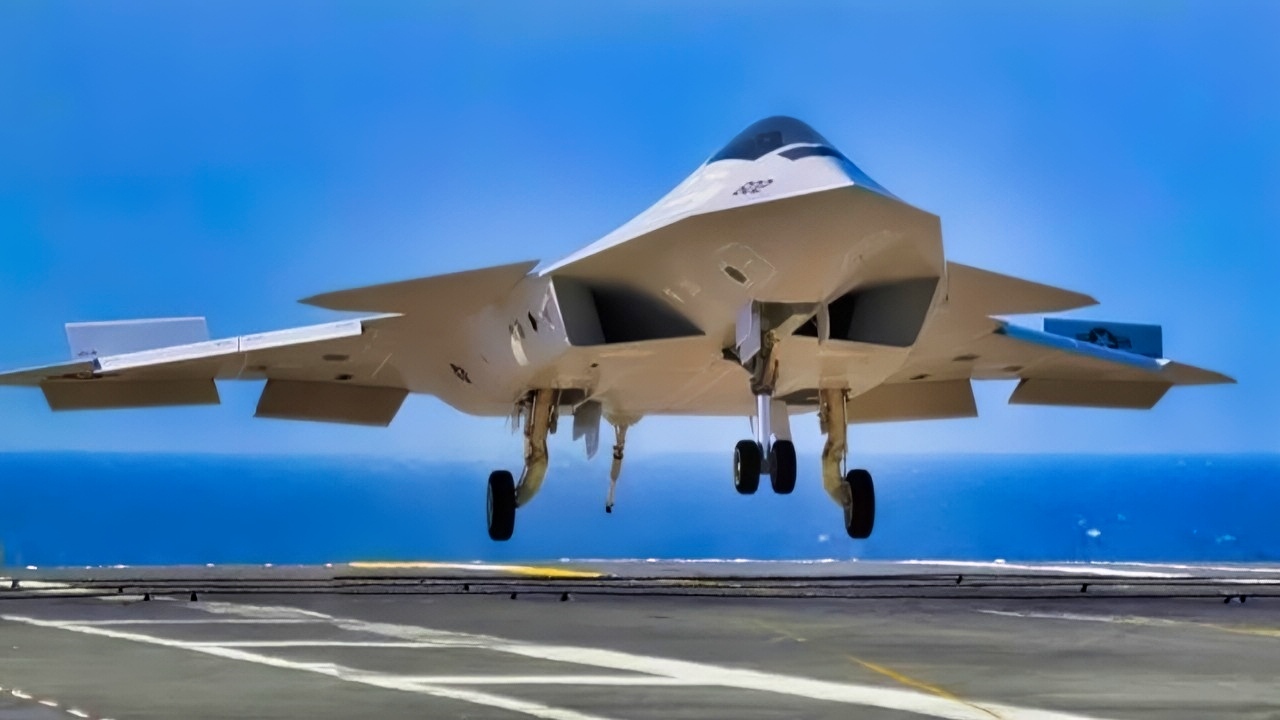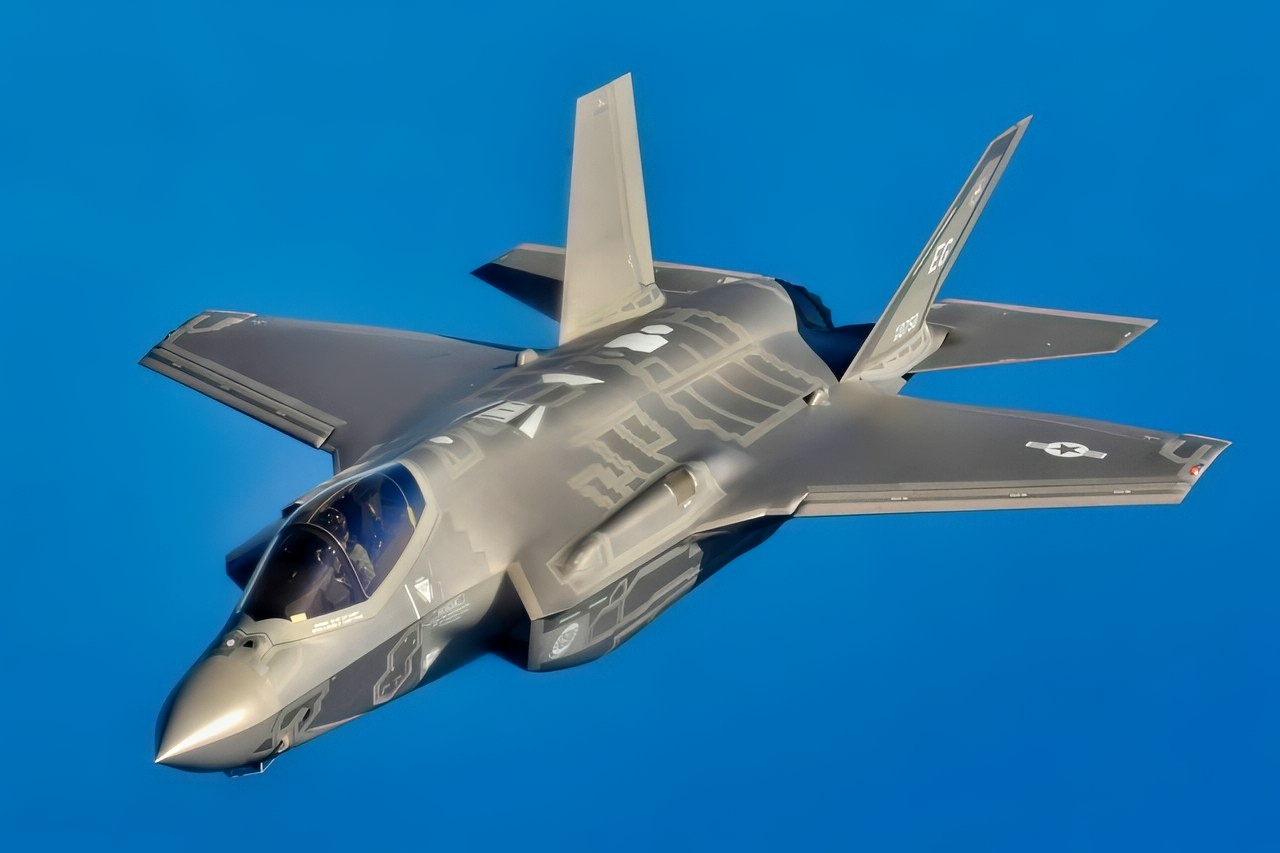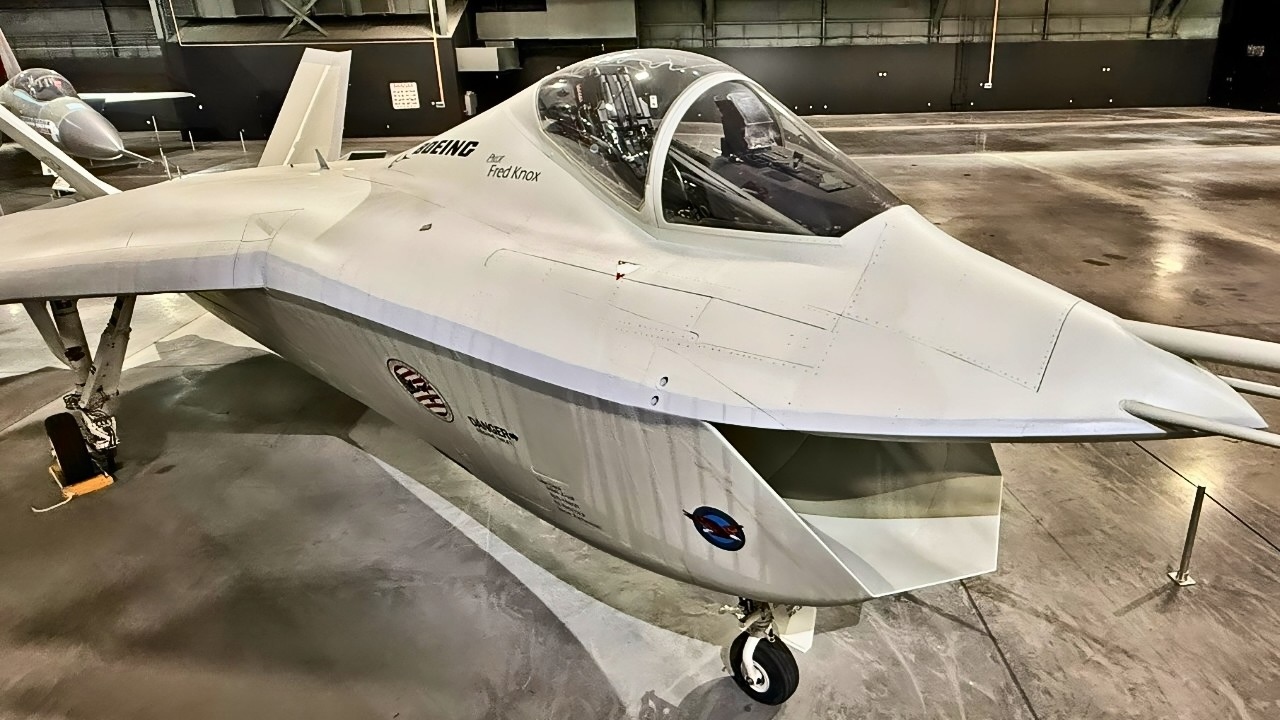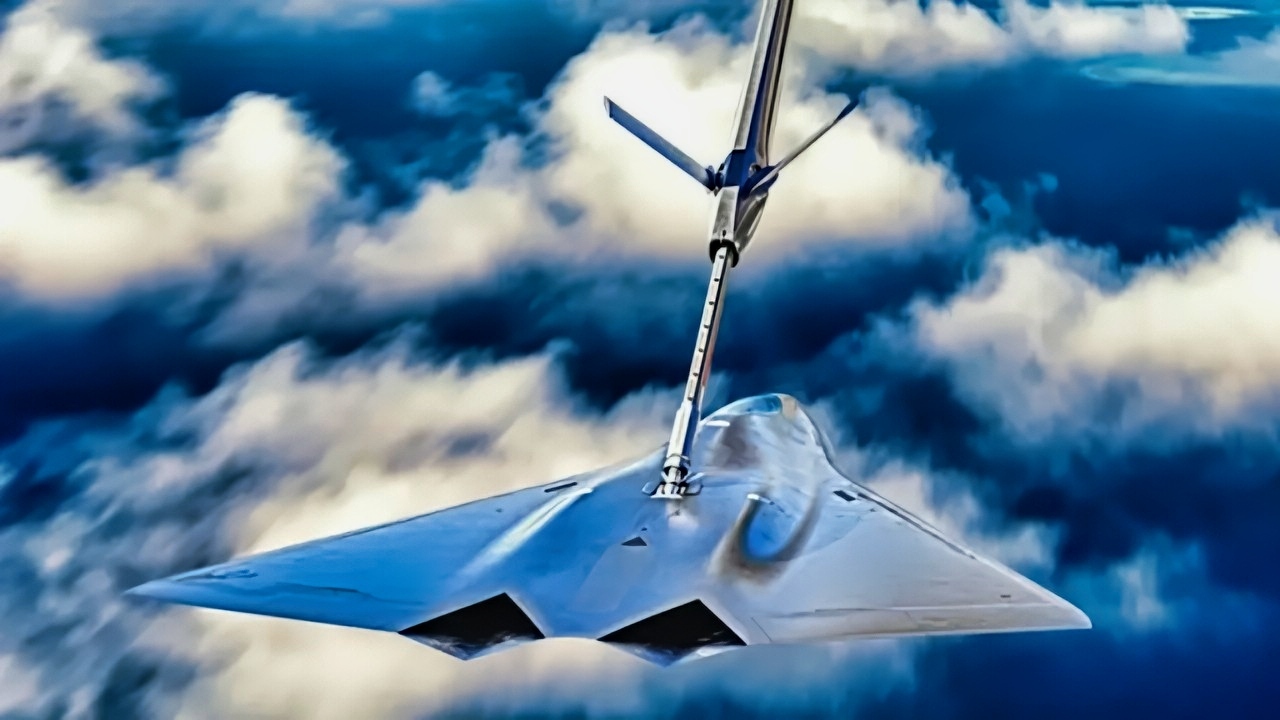Key Points and Summary – With an announcement on the U.S. Navy’s F/A-XX 6th-gen fighter imminent, an inside look reveals a surprising backstory.
-The conventional wisdom was shattered when Boeing, not Lockheed Martin, won the Air Force’s F-47 contract.

Boeing NGAD F/A-XX Fighter Rendering. Image Credit: Boeing.
-Industry insiders suggest Lockheed was eliminated from the F/A-XX race because they strategically chose not to submit a serious bid, wrongly assuming they were a lock for the Air Force program.
-The Navy now faces a tough choice between Boeing and Northrop Grumman, with concerns that either winner would be overloaded with two major stealth programs.
An F/A-XX Decision Could Come This Week. Here’s What You Need to Know.
WARSAW, POLAND – In the past few days, news emerged that US Secretary of War Pete Hegseth had approved a source selection for the US Navy’s (USN) 6th-generation F/A-XX fighter program on October 4.
This report has prompted rampant speculation that an announcement is imminent.
When and if it comes—whether this week or later—the impact on the history of Naval Aviation will be seismic and will generate multiple aftershocks.
Impending Announcement
What has led to the USN’s decision to potentially announce a prime contractor for this program, some seven months after US President Donald Trump awarded the US Air Force (USAF) the 6th-generation Next-Generation Air Dominance (NGAD) F-47 project to Boeing?
There are multiple factors involved in how the F/A-XX might be awarded, and it comes down to more than one or two simple questions, such as which company has the most experience in designing a carrier-capable aircraft.

F/A-XX Fighter from Boeing. Image Credit: Boeing.

F/A-XX Fighter. Image Credit: Creative Commons.
Another perennial question is whose “turn” it is to be awarded a big contract, although this is not the only factor in keeping the company financially stable.
Whichever way the decision goes, the profound and far-reaching implications will be felt well into the second half of this century. Think of this current-day example:
In terms of Old Testament genealogy, there is a long history leading up to what eventually became the F-35 program, which began back in 1987 with the award of the US Navy’s Advanced Tactical Aircraft (ATA). It was initiated four years earlier in 1983, and the contract team of General Dynamics and McDonnell-Douglas was awarded the program.
Four years later, in 1991, the program was canceled. Without retelling the laborious post-cancellation procurement maneuvering of the USN Naval Air Systems Command (NAVAIR), the Navy initiated a new program known as the A-X. This project went through several name changes before it became the Joint Strike Fighter (JSF) program.
The final competition for this aircraft came down to the two JSF finalists. One was the company formerly known as McDonnell-Douglas in St. Louis, which became a division of Boeing. The other was Lockheed Martin. The latter was awarded the program in 2001 for what is now designated F-35.

U.S. Air Force F-35A Lightning II Joint Strike Fighters from the 58th Fighter Squadron, 33rd Fighter Wing, Eglin AFB, Fla. perform an aerial refueling mission with a KC-135 Stratotanker from the 336th Air Refueling Squadron from March ARB, Calif., May 14, 2013 off the coast of Northwest Florida. The 33rd Fighter Wing is a joint graduate flying and maintenance training wing that trains Air Force, Marine, Navy and international partner operators and maintainers of the F-35 Lightning II. (U.S. Air Force photo by Master Sgt. Donald R. Allen/Released)
More than two decades later and 42 years after the original ATA/A-12 program began, this aircraft is still experiencing no end of problems. It is not a stretch to believe that 20-30 years from now, the F/A-XX will be in service. The process of developing and building an aircraft to replace the US Navy’s current fleet of carrier fighter aircraft will be no less arduous.
The question is which contractor gets the nod for this USN program, and it is a complicated one. And there does not appear to be a happy answer, no matter what.

Boeing X-32 Really Up Close from National Security Journal (NSJ) 2025
When Selections Do Not Go as Planned
The US Navy’s primary carrier-based fighter has been the Boeing F/A-18E/F Super Hornet for some time. This aircraft is a modified and upgraded version of the F/A-18A/B and C/D “Classic Hornet” models, originally designed and built by McDonnell-Douglas in St. Louis before the merger with Boeing.
The original design of the aircraft dates back to the 1970s when the Northrop YF-17 flew in the USAF lightweight fighter competition against the YF-16. The navalized version of the Northrop aircraft was then developed with McDonnell-Douglas and became the US Navy’s F/A-18. That part of US Naval Aviation is a history we know well.
Today, Boeing St. Louis is the USN’s preferred contractor for tactical aircraft programs.
The Navy, said one US defense contractor familiar with the history of the program, who spoke to National Security Journal, “is full of Boeing mafia. This is why most of us assumed that the selection of the next-generation US fighter and bomber aircraft was going to be a very simple division of labor between the three prime airframers.”
“NGAD, we all assumed, would go to LM. This was logical because they are the company with the seven decades of experience designing stealthy aircraft for the USAF—from the U-2 to the SR-71 to the F-117A to the F-22 and now F-35—this has been their forte,” he continued.
“Then, Northrop gets the B-21. This is a no-brainer. The company that designed and built the B-2 gets to build the aircraft that replaces it. They then get to incorporate all the lessons learned from that program to build a better, new-generation flying wing. Like LM with stealthy fighters and surveillance platforms, Northrop wrote the book on the stealth bomber design.”
“So, the next logical—or final logical—shoe to drop was for Boeing to be given the F/A-XX, which made the most sense. More than 50 years of experience with all the F/A-18 versions means you know what the carrier environment is like,” he concluded. “Conventional wisdom had it that this was the way the three primes would stay in business—with each one focusing on its area of competitive advantage.”
But, in the category of what always happens with the best-made plans, the course of history took a different turn. President Trump decided to hand the NGAD contract to Boeing. This award left the entire combat aircraft world shaking its head and asking: “What do we do now?”
Why Lockheed Martin (LM) Was Really Left Out of the F/A-XX Bidding
With Boeing now awarded the F-47, LM is the odd man out. The Bethesda, Maryland-based company could, in theory, design the F/A-XX. Something of a role-reversal between Lockheed and Boeing, but not impossible. Except for one minor complication.
It was reported two weeks before Boeing was awarded the NGAD contract that LM was out of the running for the F/A-XX.
An anonymous source is said to have told media outlets that “Lockheed submitted a bid to the Navy, but the proposal did not satisfy the service’s criteria,” suggesting that LM gave it their all and came up short in the eyes of the Navy.
This talk has raised questions about how the nation’s number one designer of fighter aircraft could be told they are out of the running, yet Northrop and Boeing, neither of which has ever built a stealthy fighter platform, are still left in the competition.
The answer has come from some senior industry insiders who are very familiar with how Lockheed handled its bids for both the USN and USAF programs.
“The reporter who wrote the story was not well-served by the ‘anonymous source’ who appeared believable enough. Both the source and the reporter could not have been more wrong,” said one industry official who worked both bids at the highest levels.
“What actually transpired is that LM assumed from the beginning that they would never win the F/A-XX. They have never built a fighter for the Navy, and they know all too well of Boeing’s intimacy with the customer—and they have never been a favorite of the Navy either. So, they made a calculated decision to not put a full-blown effort into a bid for this program.”
The reason for this course on the part of LM “is easy to understand”, he explained. “There is an immense expense involved in bidding on one of these highly classified compartmented programs. It is just too much money to spend if you know you have no chance of winning, and most of the people covering the industry do understand that aspect of the business.”
Industry reports on the current-day requirements for constructing and maintaining a special access facility for a program like F/A-XX, plus securing all the clearances for personnel involved, quote some rather steep prices. For a company like LM, the proverbial “price of admission” is in the hundreds of millions of dollars—or even billions.
In the end, LM bet that NGAD was theirs for the taking, but it was a wrong assumption. This has effectively turned the issue of who is going to build F/A-XX upside down.
One of the stronger explanations that emerged since the NGAD selection is that there were concerns from the Biden Administration-era USAF Secretary Frank Kendall that the work for future tactical aircraft was becoming a monopoly for LM. During a podcast he spoke on after the F-47 award was made, Kendall explained:
“Industrial base considerations had a lot to do with me starting the Aerospace Innovation Initiative. I wanted to reintroduce competition for tactical aircraft “after years of Lockheed Martin market dominance, especially with the F-22 Raptor and F-35 Joint Strike Fighter“.

F-47 Lockheed Photo. Image Credit: Lockheed Handout.

Shown is a graphical artist rendering of the Next Generation Air Dominance (NGAD) Platform. The rendering highlights the Air Force’s sixth generation fighter, the F-47. The NGAD Platform will bring lethal, next-generation technologies to ensure air superiority for the Joint Force in any conflict. (U.S. Air Force graphic)
In the past, Kendall had criticized LM’s monopoly on stealth programs with the F-35 and also referred to the program’s structure that made LM the sole prime as “acquisition malpractice.”
This made the criteria in the NGAD selection more about leaving the business of stealthy aircraft design in the hands of just one company. “This was considered a threat to the long-term viability of US industry as whole and carried more weight than the question of which company could design the better aircraft”, said another industry insider.
F/A-XX: So, What Happens Now?
The news that the Secretary of War had green-lit the F/A-XX and that there would be an announcement “this week” suggests that, in theory, the selection would have to happen by the close of business on Friday, October 10. That anticipated decision was based on rumors arising from Trump’s visit to the USS George H. W. Bush aircraft carrier last week for the Navy’s 250th anniversary.
Should this week come and go without an announcement, it would not be the first time that those waiting on the F/A-XX announcement would end up feeling like this was another “[L]ucy with the football moment. To employ a metaphor from the famous Charlie Brown cartoon,” said one retired Pentagon official.
Speaking yesterday with several industry designers about the selection reveals that the Washington offices of the three prime contractors are also skeptical that a decision will actually be made this week.
Whatever happens next, one of the two remaining bidders—either Northrop or Boeing—will now be working on designing two major stealthy aircraft programs at once. This creates a concern among the services that, no matter how the decision is made, one of the two will be overloaded.
The smart money is that the decision could go to Boeing and that F/A-XX would become another fighter design—but a separate program, emphasized by more than one former Naval aviator who spoke to National Security Journal.

NGAD. Image Credit. Lockheed Martin.
“The absolute last thing the Navy wants is another program where they have to buy some version of the same aircraft that the USAF is acquiring—another F-35. No one wants that,” said one of them rather emphatically, “and that might work against the program ended up with Boeing.”
There is a final reality, said one of the industry insiders who had previously explained the rationale for LM not making a high-dollar effort on the F/A-XX. There is no way the Pentagon will leave the decades of LM’s experience in stealth design “just lying by the side of the road with no one taking benefit of this,” as he described it.
“Most likely there are discussions taking place as we speak as to how [Lockheed] can sooner or later become ‘second chair’ on the F/A-XX and/or the F-47 development process. It will not be as prestigious for them as being the prime contractor,” he said. “But it is reality that most of these major programs are now cooperative efforts between several major firms anyway. F/A-XX will be no exception.”
About the Author: Reuben F. Johnson
Reuben F. Johnson has thirty-six years of experience analyzing and reporting on foreign weapons systems, defense technologies, and international arms export policy. Johnson is the Director of Research at the Casimir Pulaski Foundation. He is also a survivor of the Russian invasion of Ukraine in February 2022. He worked for years in the American defense industry as a foreign technology analyst and later as a consultant for the U.S. Department of Defense, the Departments of the Navy and Air Force, and the governments of the United Kingdom and Australia. In 2022-2023, he won two awards in a row for his defense reporting. He holds a bachelor’s degree from DePauw University and a master’s degree from Miami University in Ohio, specializing in Soviet and Russian studies. He lives in Warsaw.
More Military
The U.S. Air Force’s Big B-21 Raider Stealth Bomber Mistake Still Stings
The U.S. Navy’s Big Ford-Class Aircraft Carrier Mistake Still Stings
Russia’s Admiral Kuznetsov Aircraft Carrier Can’t Stop Pumping Out Toxic Black Smoke
India’s Big Blunder Purchase of Russia’s ‘Mothball’ Aircraft Carrier Still Stings











angelo corbin
October 10, 2025 at 12:23 pm
This is great, we are upgrading our military that will be generations ahead of any country, under trump and if JD Vance becomes president, no country will dare threaten us or our friends. We pat taxes to keep our country strong militarily and economically, nor support illegals or people who refuse to work.